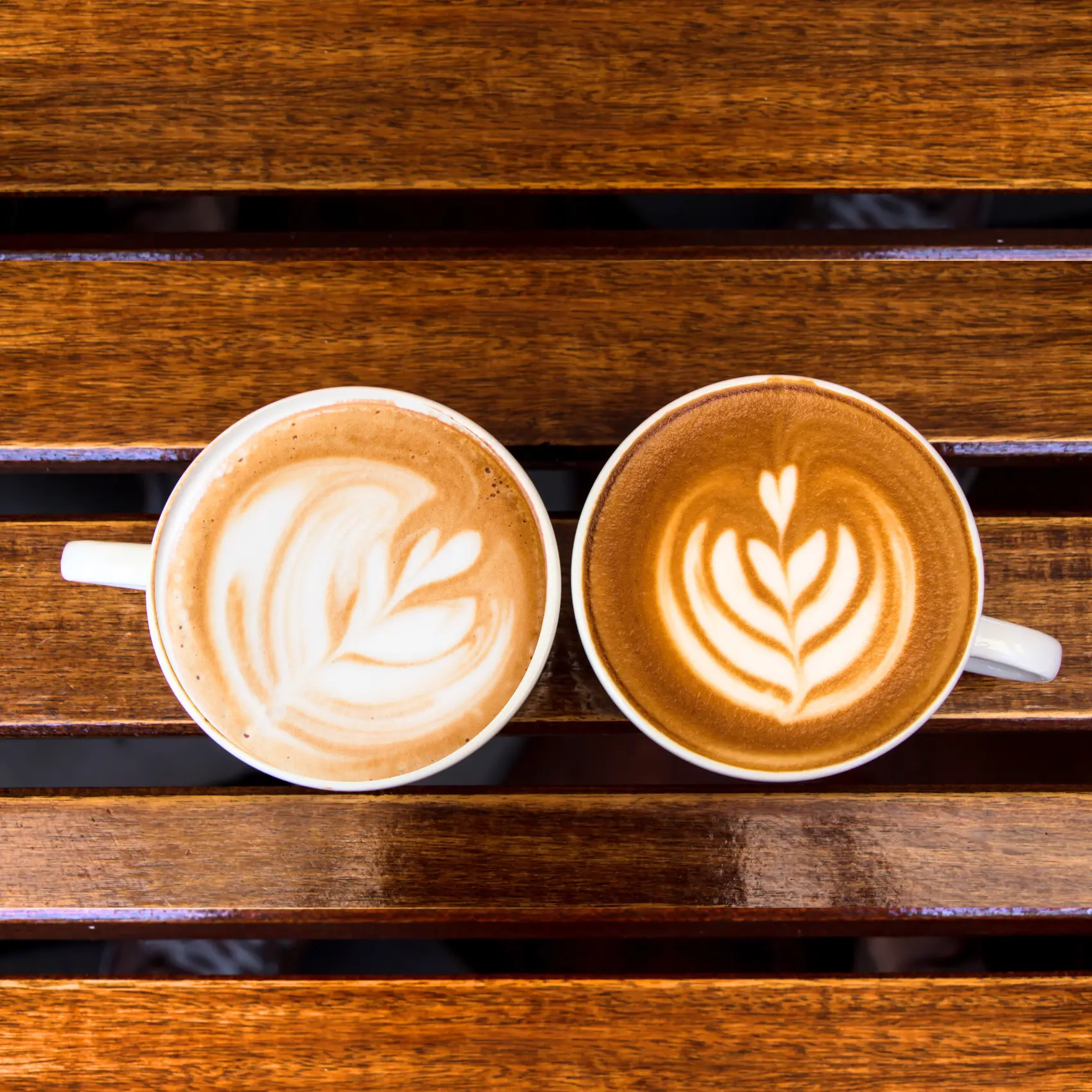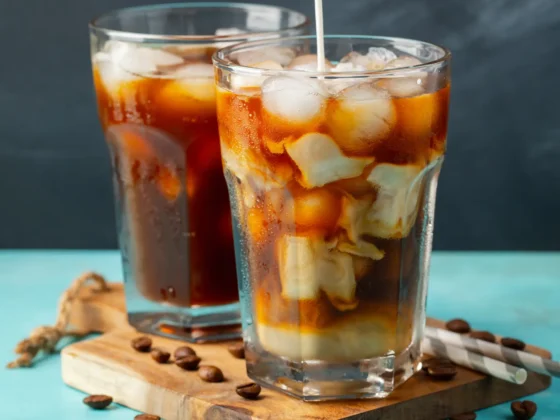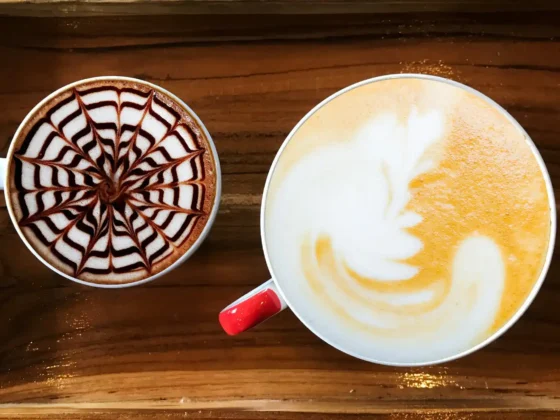In the dynamic world of coffee, where cultures converge and trends continually evolve, two names often stand out in the bustling cafés and whispered conversations of aficionados: cappuccino and latte. The age-old debate of cappuccino vs latte delves deeper than just milk-to-coffee ratios. From the historical traditions that have shaped their iconic statuses, regional variations adding distinct flairs, to the ever-evolving global coffee trends that redefine our palate preferences, these two beverages are emblematic of a global coffee culture that is both rooted in tradition and receptive to innovation. This article seeks to decode these coffee classics, providing an immersive journey into their rich tapestry of tastes, textures, and tales. Join us as we explore the nuances that make each of these beverages a cherished favorite across continents.
Tired of reading? Give your eyes a rest and listen to the article below.
- Introduction & Key Takeaway
- https://app.mysoundwise.com/tracks/16984446145983318e.mp3
- What is a Cappuccino?
- https://app.mysoundwise.com/tracks/16984462485516824e.mp3
- What is a Latte?
- https://app.mysoundwise.com/tracks/16984462738064448e.mp3
- Comparing Cappuccino vs Latte
- https://app.mysoundwise.com/tracks/16984463161899211e.mp3
- Brewing at Home
- https://app.mysoundwise.com/tracks/16984463430254688e.mp3
- Cappuccino vs Latte: Brewing Technique
- https://app.mysoundwise.com/tracks/16984463700514673e.mp3
- Coffee Culture and Trends
- https://app.mysoundwise.com/tracks/16984463984378325e.mp3
- Conclusion & FAQs
- https://app.mysoundwise.com/tracks/16984464219837593e.mp3
Latte vs Cappuccino: Key Takeaway
- Foundational Similarities: Both cappuccino and latte originate from espresso-based foundations, demonstrating the versatility of espresso in creating varied beverages.
- Distinct Identities: While cappuccinos are characterized by their equal parts of espresso, steamed milk, and milk foam, lattes boast a higher milk content, often adorned with intricate milk foam art.
- Global Interpretations: The cappuccino and latte experience is enriched by regional variations. From the dry cappuccino favored in some locales to the popular latte macchiato, these beverages are tailored and celebrated differently worldwide.
- Coffee Culture’s Evolution: Beyond the drinks themselves, the broader coffee culture, including emerging trends like nitro coffee and ethical coffee choices, impacts how we perceive and enjoy our cappuccinos and lattes today.
- More Than Just Beverages: Cappuccino and latte are not merely drinks but stories of tradition, innovation, and global camaraderie. Appreciating their nuances allows us to immerse ourselves in the rich tapestry of worldwide coffee culture.
What is a Cappuccino?
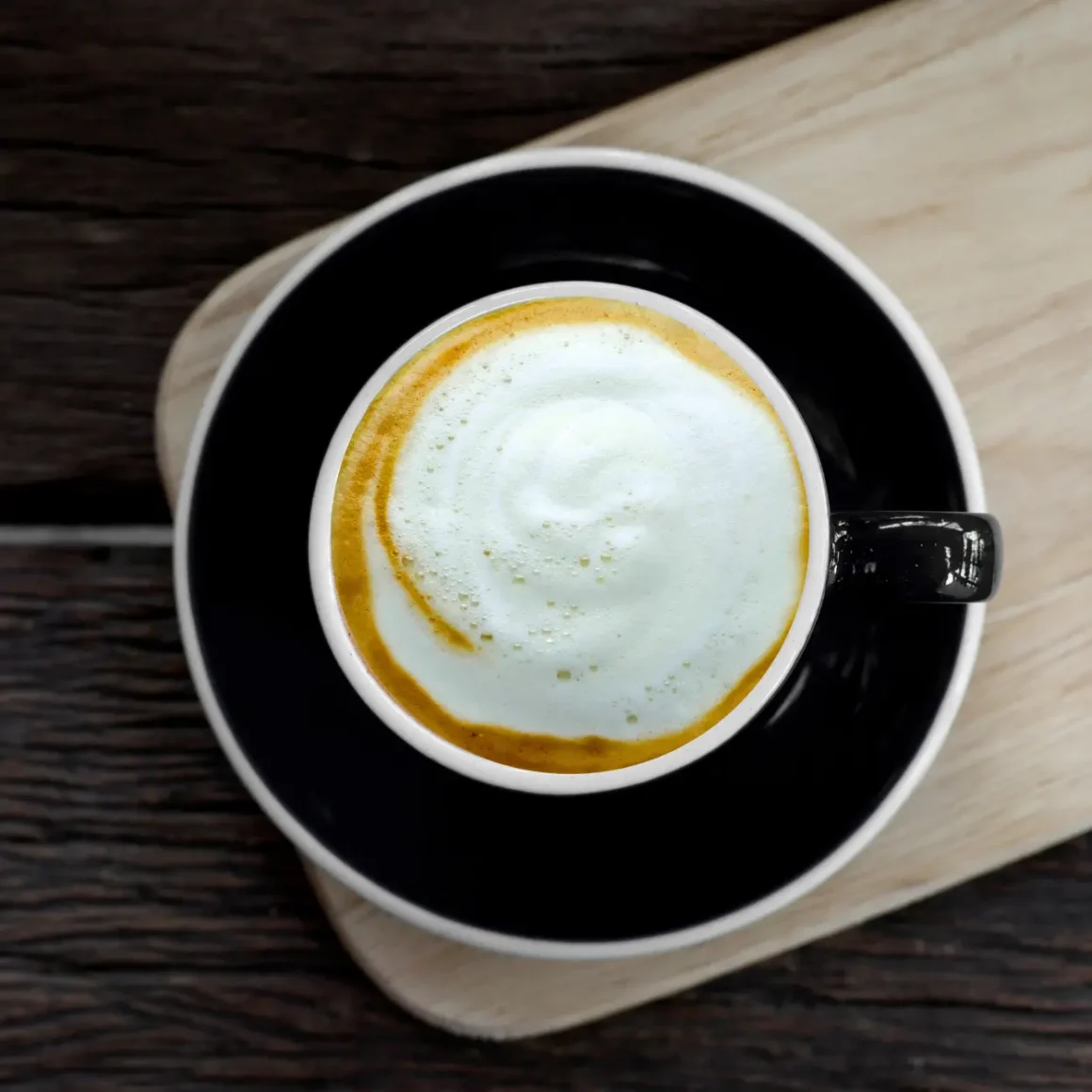
A cappuccino is a coffee beverage that has stood the test of time and continues to enchant coffee aficionados across generations. This exquisite drink is crafted from a harmonious blend of aromatic espresso, silky steamed milk, and delicate milk froth. What makes the cappuccino truly special is its meticulous attention to proportion, known as the “Golden Rule” in the coffee world. In this 1:1:1 ratio, each of its core components—the bold espresso, creamy steamed milk, and airy milk froth—contribute equally to the overall experience, creating a beautifully balanced flavor and texture. As we commence a more in-depth investigation of this captivating drink, we’ll delve into its beginnings, the imaginative inspiration it ignites, and the delicate complexities that make it beloved by coffee enthusiasts worldwide.
Origins and History
Delving into the history of our favorite brews reveals fascinating tales and insights. The cappuccino is no exception, with its legacy intertwined with European culture and the evolution of coffee consumption.
The Italian Roots of Cappuccino
Origin stories are the essence of culinary wonders. The cappuccino, while ubiquitous today, has its heritage deeply embedded in the heart of Europe.
- Viennese Beginnings: Before Italy adopted the cappuccino, it was known as the ‘kapuziner’ in 18th-century Vienna. This early version was recognized for its combination of coffee, sugar, cream, and sometimes spices. The name drew inspiration from the brown robes of the Kapuzin friars. (1)
- Italian Transition: By the early 1900s, this coffee made its mark in Italy. With the introduction of the espresso machine, its popularity surged, albeit initially within specialized cafes. Authentic Italian cappuccinos are meticulously presented in preheated porcelain cups, ensuring adherence to the classic 1:1:1 ratio.
- Cultural Significance: In Italy, “cappuccini” are morning staples, often paired with a pastry. The idea of enjoying café cappuccino post-dinner is uncommon, as Italians generally prefer espresso coffee to culminate their meals.
The transformation of ‘kapuziner’ to ‘cappuccino’ remains a topic of intrigue, but one thing is clear: the beverage has left an indelible mark on Italian coffee culture.
Evolution of Cappuccino in Modern Coffee Culture
Modern coffee culture has witnessed the cappuccino undergo several changes, adapting to evolving tastes and preferences.
- Serving Sizes: Traditional coffee houses stick to a 6oz serving size. However, contemporary cafes, especially larger franchises, have expanded the size options considerably.
- Preparation Methods: The question of what’s in a cappuccino has slightly evolved. Some modern, third-wave coffee shops present cappuccinos without milk froth, focusing only on espresso and steamed milk.
- Global Variations: Outside Italy, cappuccino consumption spans the entire day, contrasting the Italian morning tradition. Also, cappuccinos have witnessed various modifications, from iced cappuccino concoctions in the U.S to Freddo cappuccino in Greece, Cyprus, and parts of Italy.
With the progression of time, the cappuccino has seamlessly blended into diverse coffee cultures, redefining itself while maintaining its core essence.
Why Cappuccino is a Classic Choice
While new coffee beverages emerge, the cappuccino remains a timeless favorite, and here’s why:
- Balanced Profile: The triad of espresso, steamed milk, and froth ensures a harmonious blend of strength, creaminess, and texture.
- Versatility: Whether it’s a bone-dry cappuccino focusing on froth or a wet version emphasizing milk, there’s a variant for every palate.
- Artistic Presentation: From the latte art that adorns it to the occasional dusting of cocoa, the cappuccino is as much a visual delight as it is a gustatory one.
A sip of a well-made cappuccino is a testament to its enduring appeal in a world of ever-evolving coffee trends.
Ingredients and Preparation

Understanding the anatomy of a cappuccino is pivotal. With the right components and techniques, one can master the art of crafting this classic brew.
The Perfect Espresso Shot
The backbone of a cappuccino lies in its espresso. Achieving that perfect shot requires precision and expertise.
- Choice of Beans: Medium roast coffee is ideal, delivering a balanced and nuanced flavor profile.
- Grinding: Ensure a consistent and fine grind, pivotal for optimal extraction.
- Brewing: Pay attention to the water temperature and pressure when brewing to extract the best flavors.
Without a doubt, the espresso shot is the foundational pillar of how to make a cappuccino that resonates with perfection.
Steaming Milk to Perfection
Milk plays a dual role in a cappuccino, providing both taste and texture.
- Quality: High-quality whole milk or barista-grade non-dairy options are preferred, with their fat content enhancing the overall mouthfeel.
- Temperature: Steamed milk should be velvety and warm, not scalding, to meld perfectly with the espresso.
- Technique: The steaming process introduces tiny air bubbles, creating a smooth and plush texture, essential for a superior cappuccino experience.
The Art of Frothing Milk
Milk froth, the crowning glory of a cappuccino, requires skill and finesse.
- Consistency: Aim for microfoam, characterized by tiny, uniform bubbles, which lends a creamy texture.
- Volume: Frothing can often double the volume of the milk, so always account for this expansion.
- Pouring: A skilled barista can create mesmerizing patterns, enhancing the visual appeal of the cappuccino.
Achieving the right froth consistency can transform a good cappuccino into an exceptional one.
Flavor Profile

The sensory experience of sipping a cappuccino is a blend of flavors and textures, each component playing a pivotal role.
Balancing Espresso and Milk
The interplay between robust espresso and creamy milk is integral to the cappuccino’s character.
- Strength vs. Creaminess: While espresso lends intensity and depth, milk tempers this with its sweetness and richness.
- Temperature Harmony: Both components should complement each other in warmth, ensuring a harmonious sip every time.
The Role of Microfoam
Microfoam is more than just frothed milk; it’s the textural delight of a cappuccino.
- Texture: The presence of minuscule air bubbles imparts a velvety feel, enriching the drinking experience.
- Insulation: Beyond texture, the foam layer also acts as a thermal barrier, preserving the warmth of the beverage.
Popular Cappuccino Variations
The classic cappuccino has inspired numerous derivatives, each with its unique twist.
- Freddo Cappuccinos: Perfect for warmer days, this cold version offers a refreshing take on the classic.
- Wet & Bone Dry Cappuccinos: While wet versions are milk-dominant, bone dry cappuccinos are froth-focused, allowing patrons to customize their experience.
- Flavored Cappuccinos: From vanilla to caramel, these cappuccinos are tailored to the adventurous palate, offering an array of taste profiles, including caramel cappuccino.
In the realm of coffee, the cappuccino stands as an emblem of tradition, versatility, and artistry. Whether enjoyed in an Italian café or brewed at home, it remains a testament
What is a Latte?

A latte, colloquially known as “caffè latte,” represents a harmonious blend of robust espresso and velvety steamed milk. This Italian beverage, when translated, aptly means “milk coffee.” Unique to the latte is its 3:1 milk-to-coffee ratio, delivering a creamier consistency, which contrasts with the sharper profiles of drinks like cappuccinos and the latte macchiato. As we delve deeper into this fascinating beverage, we’ll explore its roots, the artistry it inspires, and the nuances that make it so endearing to coffee enthusiasts worldwide.
Origins and History
The caffé latte boasts a rich tapestry of history, having evolved through centuries and across continents. While it holds a storied past, today, it stands as a testament to the art of coffee brewing. The narrative of how it came to be cherished in modern-day cafes is both intricate and compelling.
The Birth of the Latte
Originating from European traditions, coffee blended with milk began its journey in the 17th century. This partnership’s evolution over time is nothing short of fascinating:
- European Beginnings: As early as the 17th century, Europeans developed an affinity for mixing coffee with milk. The term “latte” found its way into literature, notably in William Dean Howells’ 1867 piece titled “Italian Journeys.” During this period, coffee’s global surge was in full swing, yet the absence of modern machinery meant that brewing techniques remained relatively basic. (2)
- Emergence of Espresso: To truly grasp the nature of the original latte, we must understand espresso’s history. The first official espresso machine, with a mere 1.5 atmospheres of pressure, was patented in 1884. It wasn’t until the 1940s, with Achille Gaggia’s introduction of the spring-piston lever, that “pulling a shot” became part of the coffee lexicon.
- The Crema Discovery: This era also marked the discovery of crema. While initially dismissed as a mere byproduct, Gaggia rebranded it as a hallmark of quality, coining the term “caffe creme.”
In essence, the latte’s origins mirror coffee’s broader evolution, adapting to technological advancements and ever-changing taste profiles.
Latte’s Global Popularity
From quaint European streets to bustling American avenues, the latte’s widespread appeal is undeniable:
- European Variations: From Italy’s “caffè latte” to Spain’s “café con leche” and France’s “café au lait,” milk-based coffee has been a staple in various forms.
- American Resurgence: Post-World War II America witnessed a growing interest in foreign beverages. The iced latte soon became a favorite, offering a refreshing alternative. By the 1990s, cities like Seattle became hubs for the latte’s resurgence, propelling its popularity to new heights.
The latte’s undeniable charm lies in its versatility and universally appealing flavor, making it a beloved choice across the globe.
Latte Art: An Expression of Creativity
The world of latte art adds a visual dimension to the sensory experience:
- Origins: Seattle-based baristas started crafting intricate patterns using textured milk, bringing an artistic flair to the once-simple beverage.
- Popular Motifs: Today, designs range from simple hearts to intricate tulips, swans, and even roses.
Latte art, more than just a visual delight, represents baristas’ craftsmanship, enhancing the overall experience of savoring a well-made latte.
Ingredients and Preparation
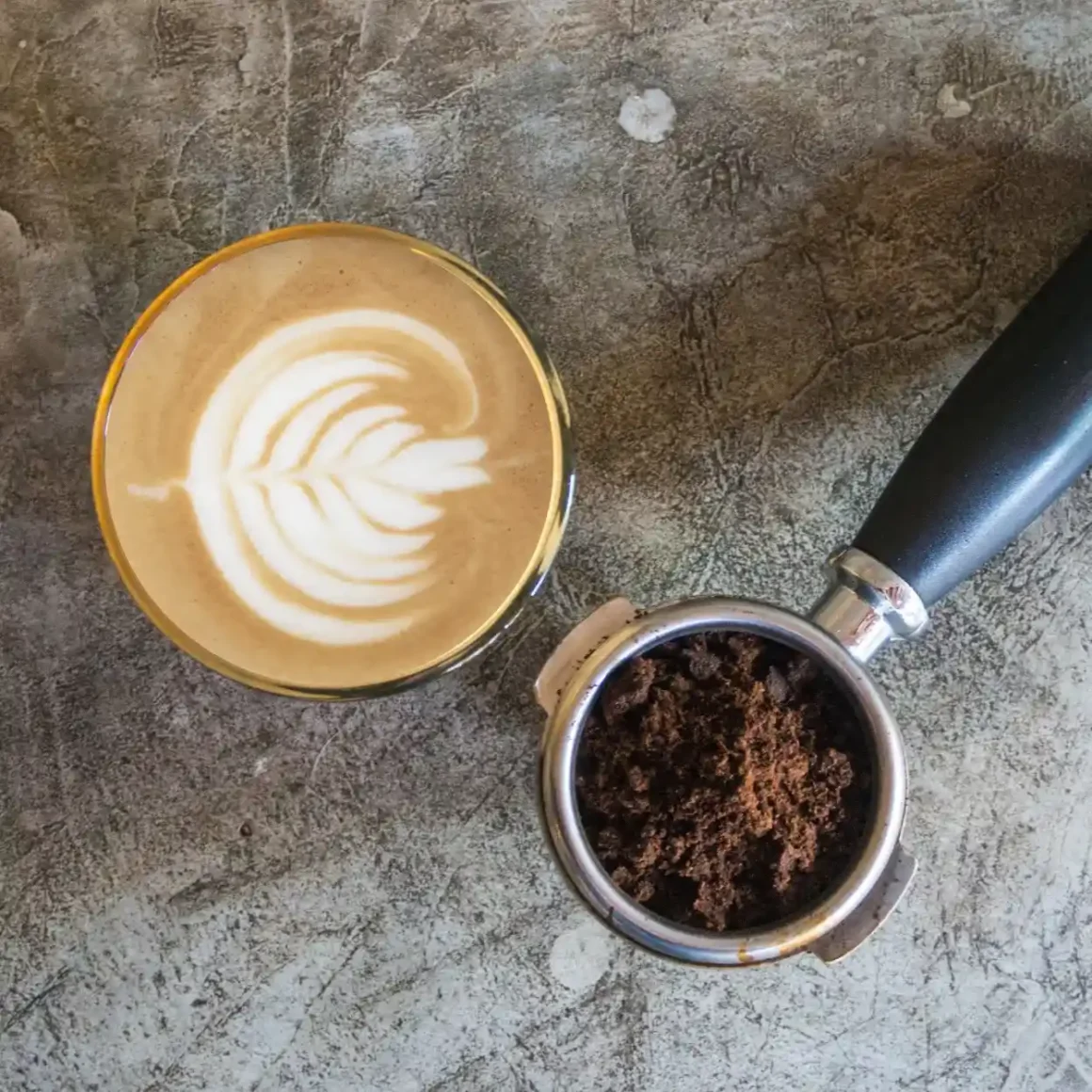
Understanding the components and craftsmanship behind a latte offers insights into its delicate balance. It’s not just about what goes into a latte but also how those ingredients are treated and combined.
The Espresso Foundation
At the heart of any latte is its espresso. This concentrated brew forms the drink’s base:
- Definition: Authentic espresso involves hot water passing under significant pressure through finely ground coffee.
- Evolution: From the rudimentary machines of the 1880s to modern high-pressure systems, espresso brewing has come a long way.
Espresso remains pivotal in determining a latte’s overall flavor profile and strength.
Steamed Milk: The Heart of a Latte
Steamed milk gives the latte its signature creamy texture:
- Microfoam: Baristas aim to achieve a consistent “wet paint” texture, ensuring the milk blends seamlessly with the espresso.
- Technique: While mastering the perfect steaming without professional equipment can be a challenge, various tools can approximate the desired consistency.
The milk’s treatment, both in terms of quality and steaming technique, is crucial to crafting an impeccable latte.
Achieving Latte Art
The intricacies of latte art require a blend of skill and practice:
- Foundation: The key lies in achieving the perfect milk texture, allowing for smooth pouring.
- Patterns: From simple designs to more complex ones, mastery is a result of consistent practice and understanding of milk’s behavior.
For many, latte art elevates the experience, transforming a routine coffee run into a memorable moment.
Flavor Profile

When diving into a latte’s flavor, one is introduced to a dance of boldness from the espresso and sweetness from the milk. This harmony creates a beverage that’s both robust and gentle, perfect for those seeking depth without overpowering bitterness.
The Creamy Consistency of a Latte
- Blend: The 3:1 ratio ensures that the latte strikes a balance, unveiling the espresso’s richness while offering a velvety finish.
- Comparison: Unlike its bolder cousin, the cappuccino, a latte leans more towards a creamy, mild flavor profile.
This delicate balance is what makes a latte stand out, offering a soothing experience with each sip.
Sweetened Latte Variations
Lattes serve as a fantastic canvas for flavor experiments:
- Popular Additions: Flavors like vanilla, caramel, and mocha have become mainstream additions, offering a sweeter spin on the classic latte.
- Specialty Drinks: The pumpkin spice latte and chai latte are a testament to the beverage’s adaptability, catering to seasonal preferences and diverse palates.
Whether enjoyed in its pure form or with a flavor twist, the latte continues to inspire and delight.
Seasonal Latte Trends
The world of lattes is ever-evolving, adapting to changing tastes and seasons:
- Fall Favorites: The pumpkin spice latte has become synonymous with autumn, offering a warm blend of spices.
- Winter Wonders: During colder months, flavors like peppermint and gingerbread often make appearances.
These seasonal adaptations showcase the latte’s versatility, reaffirming its place in the hearts of coffee lovers worldwide.
Comparing Cappuccino vs Latte
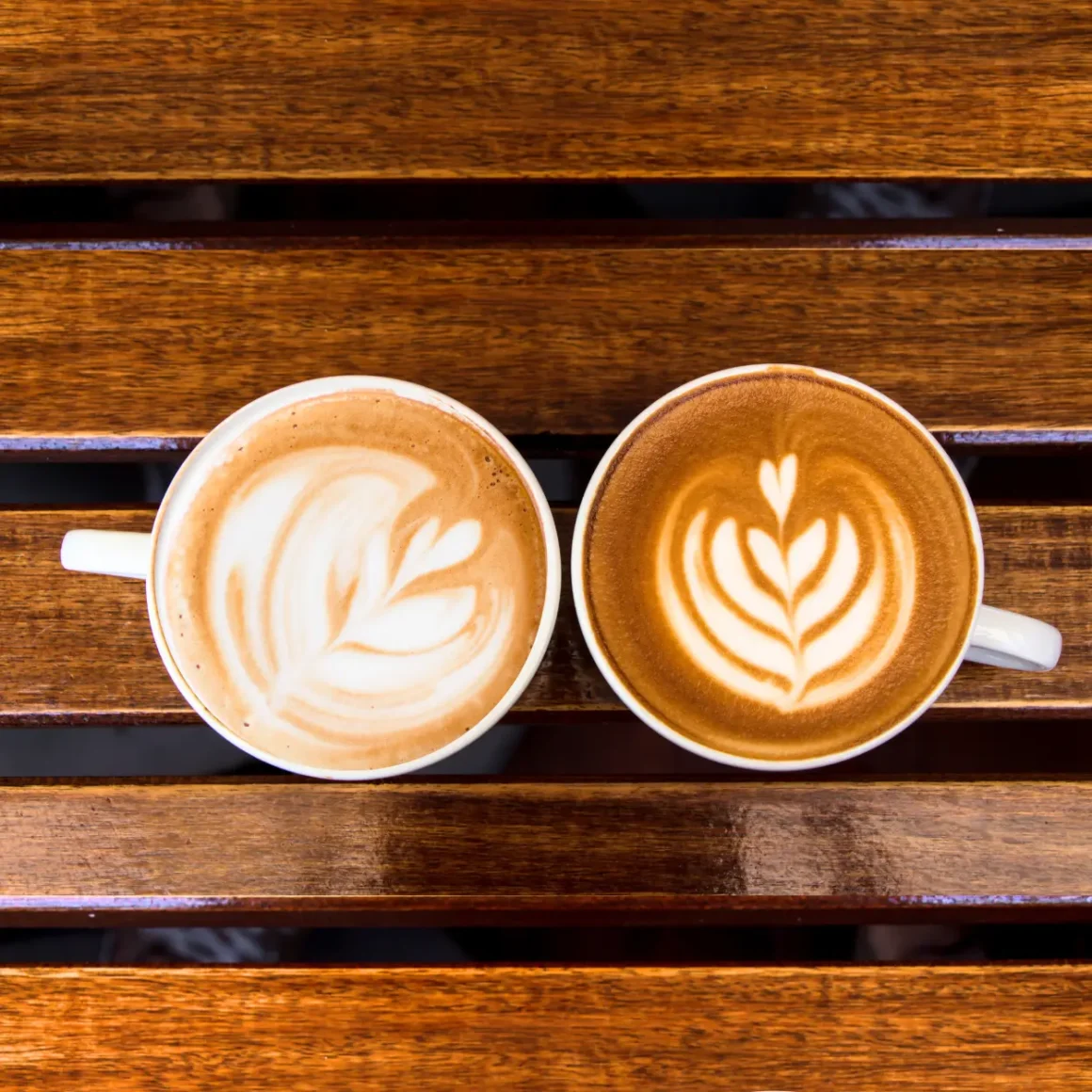
In the world of coffee, the debate between latte vs cappuccino has long been a subject of discussion among enthusiasts and baristas. These two esteemed Italian coffee beverages, both hallmarked by heated milk, differ primarily in their milk-to-coffee ratios and texture, resulting in distinct taste experiences.
Taste and Texture
Embarking on the journey of contrasting these beverages, we first delve into the realms of taste and texture, aspects that lend each drink its unique identity.
The Boldness of Cappuccino
A cappuccino, with its equal proportions of espresso, steamed milk, and milk foam, offers a robust flavor spectrum.
- Espresso Base: The foundation of the drink, espresso, imparts the characteristic coffee essence. The intensity can be adjusted by varying the number of espresso shots.
- Layered Experience: Cappuccinos are renowned for their three-layer structure: the rich espresso base, followed by steamed milk, culminating in a delicate, airy milk foam on top.
- Variations: European and artisanal coffee establishments, particularly in the USA, often serve cappuccinos in 160ml portions. The occasional addition of cocoa or chocolate shavings can tweak the flavor profile.
Through this structure and blend, the cappuccino delivers a harmonious fusion of flavors, catering to those who seek a bold coffee experience.
The Creaminess of Latte
The café latte, often simply referred to as a latte, is distinguished by its creamier texture and milder taste.
- Milk Dominance: Lattes possess a larger volume of steamed milk relative to cappuccinos. This higher milk content offers a creamier mouthfeel.
- Latte Artistry: Baristas often showcase their skills with intricate milk froth designs atop lattes, from hearts to animal motifs, enhancing the visual and taste experience.
- Global Variations: Outside Italy, a café latte generally consists of 1/3 espresso and 2/3 steamed milk, crowned by a thin milk froth layer.
With its creamy profile and artistic presentation, lattes provide a gentler coffee indulgence.
How Personal Preferences Impact Choice
When it comes to selecting between a cappuccino and a latte, personal preferences play a pivotal role.
- Flavor Depth: Those leaning towards a stronger, bolder flavor might gravitate towards cappuccinos.
- Creamy Consistency: Individuals who appreciate a creamier, milder beverage would likely favor lattes.
- Visual Appeal: The allure of latte art could be a deciding factor for some, while others may prefer the layered structure of cappuccinos.
Both beverages have their unique charm, catering to varied tastes and moods.
Caffeine Content
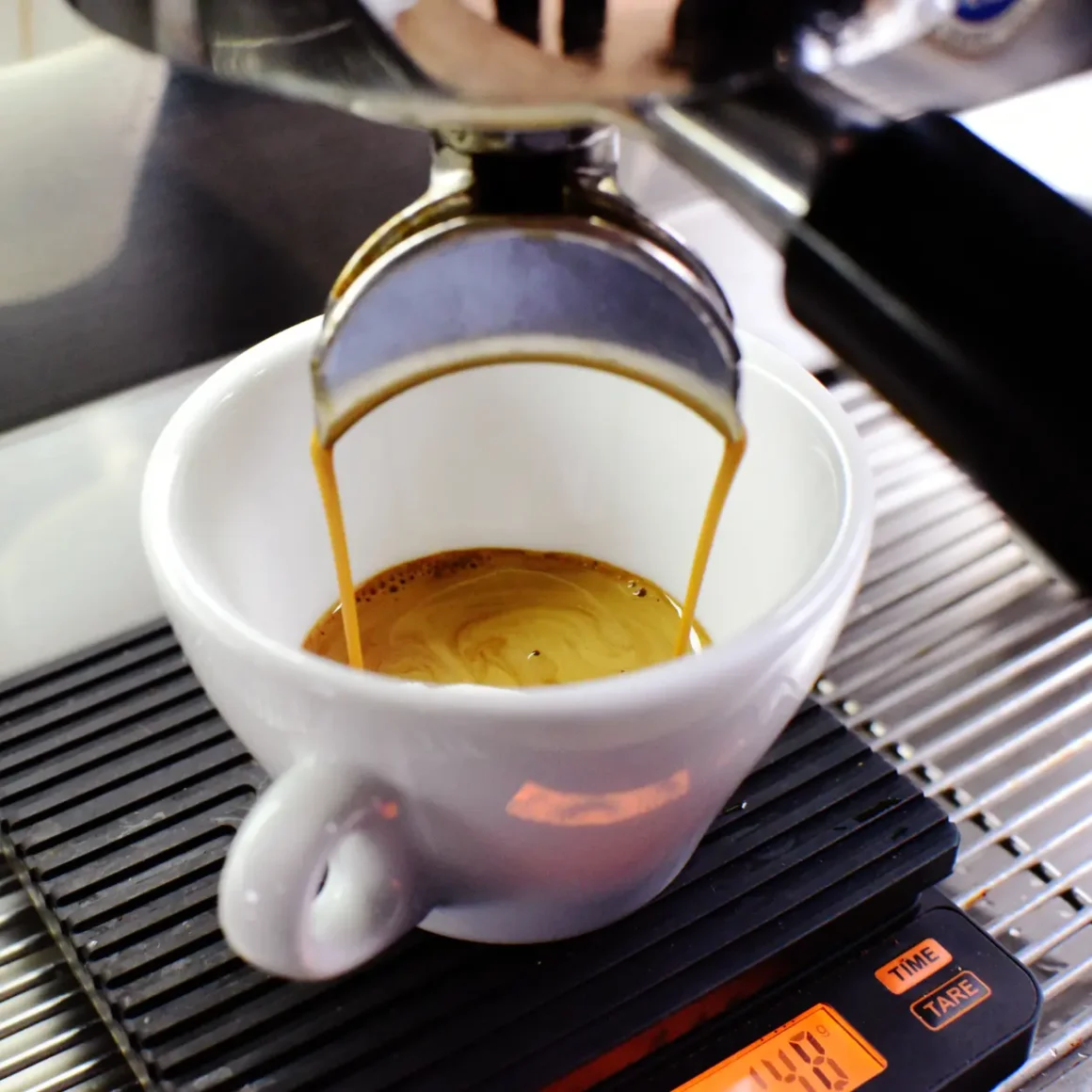
Understanding the caffeine content is crucial for many coffee aficionados, as it affects both flavor intensity and the energizing effect of the drink.
Analyzing the Espresso Component
Espresso serves as the caffeine backbone for both drinks.
- Cappuccino: Typically, a single-shot cappuccino boasts about 77 mg of caffeine. This amount can increase with additional shots.
- Latte: Generally, a 16-ounce latte, with its higher coffee-to-milk ratio, contains around 173 mg of caffeine.
The choice and number of espresso shots significantly determine the caffeine concentration in these beverages.
How Milk Dilutes Caffeine
Milk’s role extends beyond texture and flavor; it impacts caffeine concentration.
- Dilution Effect: The higher the milk content, the more diluted the caffeine becomes. This is evident when comparing the caffeine in cappuccino and latte.
- Creaminess vs Potency: While lattes offer a creamier experience, their higher coffee-to-milk ratio ensures they still pack a caffeine punch.
Milk plays a dual role in moderating both texture and caffeine strength.
Which Packs a Stronger Punch?
When comparing the caffeinated kick between the two:
Cappuccino: Its flexible espresso shots mean its strength can be tailored, from 77 mg to 231 mg of caffeine.
Latte: Typically has around 173 mg of caffeine for a 16-ounce serving.
While lattes generally offer more caffeine due to their size, cappuccinos can be more potent based on espresso concentration.
Nutritional Differences
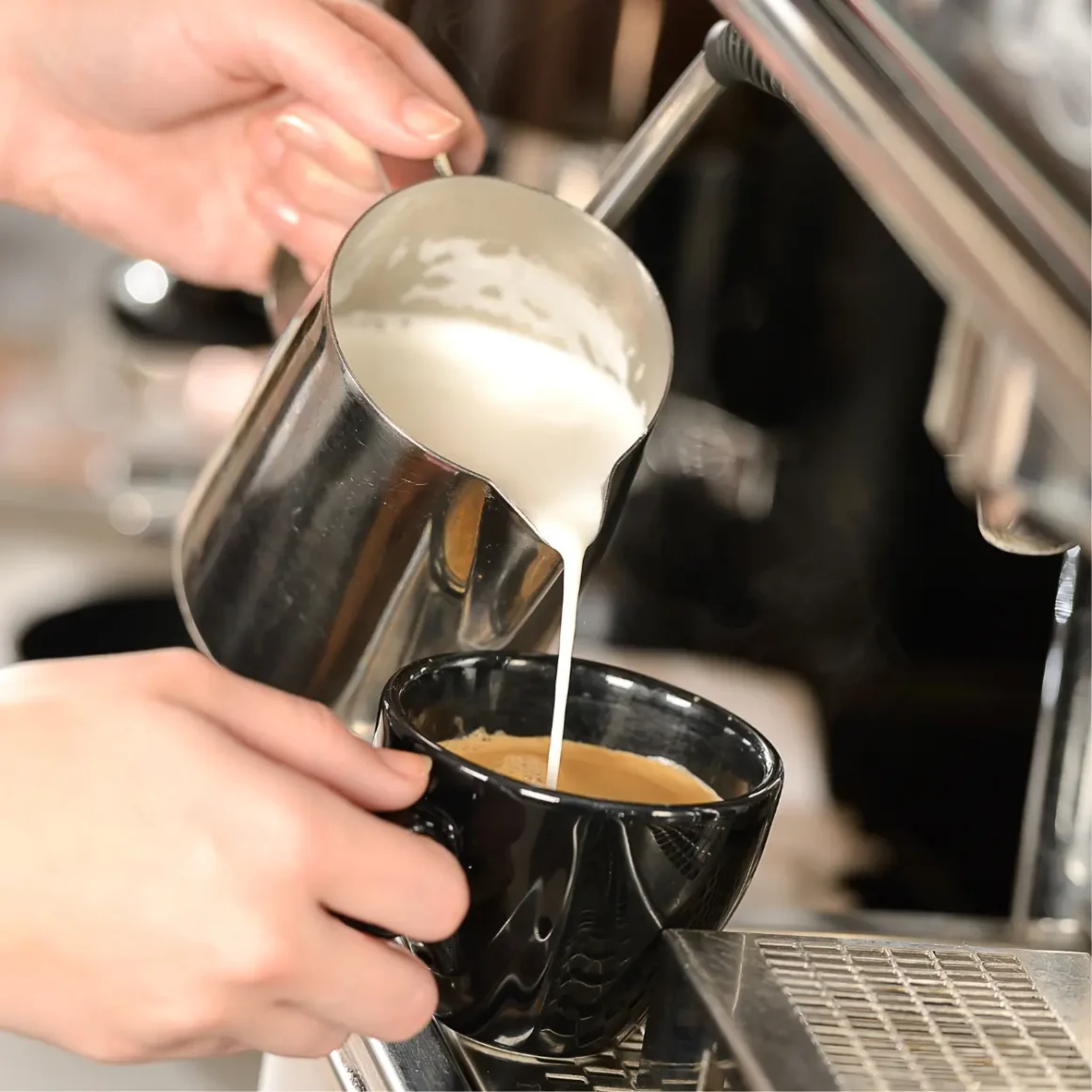
Moving from taste and strength, the nutritional makeup of these drinks is pivotal for health-conscious consumers.
Calorie Count and Macros
The calories for cappuccino and latte vary based on milk content and additions. (3)
- Cappuccino: A 16-ounce serving approximately contains 130 calories, with specific macro details such as 5 grams of fat and 8 grams of protein.
- Latte: Similarly sized, a latte also averages around 206 calories but can vary based on flavor additions.
While they have similar calorie counts, the type of milk and any added flavorings can alter the nutritional profile.
Dietary Considerations
Beyond caloric intake, other dietary aspects are essential.
- Milk Varieties: The type of milk, from whole to skim or plant-based, affects nutritional value and dietary suitability.
- Sweeteners: Added sugars or syrups can significantly alter both calorie and sugar content.
Personal dietary preferences and restrictions will dictate the best choice between the two.
Making Informed Health Choices
In today’s health-centric world, understanding what goes into our coffee can guide healthier choices.
- Customization: Both beverages offer flexibility—reducing sugar, choosing alternative milk, or adjusting portion sizes.
- Awareness: Being cognizant of caffeine content can help regulate daily intake.
Whether it’s a latte or cappuccino coffee, making informed decisions allows for both enjoyment and health mindfulness.
Brewing at Home
Homebrewing your favorite café cappuccino or café latte can be a delightful experience. To achieve the perfect cup, it’s essential to consider your equipment and technique, as well as explore the different brewing methods available.
Equipment and Technique
The essence of a good coffee doesn’t just lie in the beans, but also in the equipment used and the techniques applied. Whether you’re a novice or a seasoned barista, understanding the intricacies of each tool and the best practices can drastically improve your home-brewed coffee’s taste and quality.
Espresso Machines vs. Manual Methods

There’s a vibrant debate in the coffee community about the supremacy between espresso machines and manual methods. While both have their merits, it comes down to individual preferences and what you seek in your coffee experience.
- Espresso Machines: Investing in a quality espresso machine is a game-changer for crafting café-style cappuccinos and lattes at home. These machines offer precise control over temperature and pressure, resulting in a rich and flavorful espresso base.
- Manual Methods: If you prefer a hands-on approach, manual methods like the AeroPress or Moka pot can deliver excellent results. They require a bit more practice but can be rewarding for coffee enthusiasts.
In essence, if you crave efficiency and consistency, an espresso machine might be your go-to. However, if you cherish the brewing process itself, manual methods might appeal more.
Coffee Pod Machines
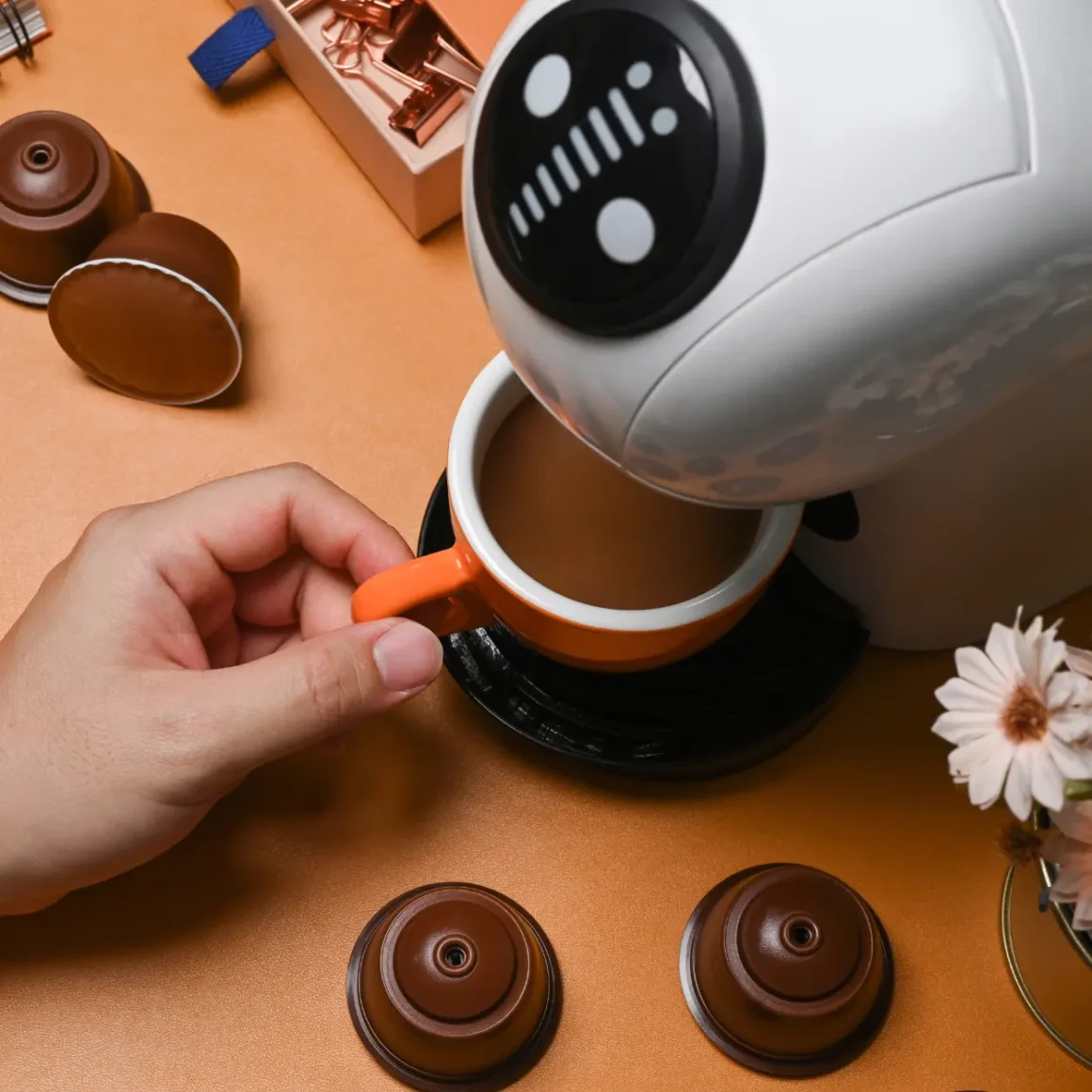
Coffee pod machines provide a convenient option for brewing café cappuccinos and café lattes at home. They offer consistency and simplicity:
- Convenience: Coffee pods are pre-measured and eliminate the need for grinding beans or tamping grounds.
- Variety: Many brands offer a wide range of coffee pod flavors, including cappuccino and latte options.
- Quick Brewing: Pod machines are known for their speed, making them an excellent choice for busy mornings.
While they offer unparalleled convenience, some purists argue they can’t match the depth of flavor achieved by traditional methods.
Frothing and Steaming Tips
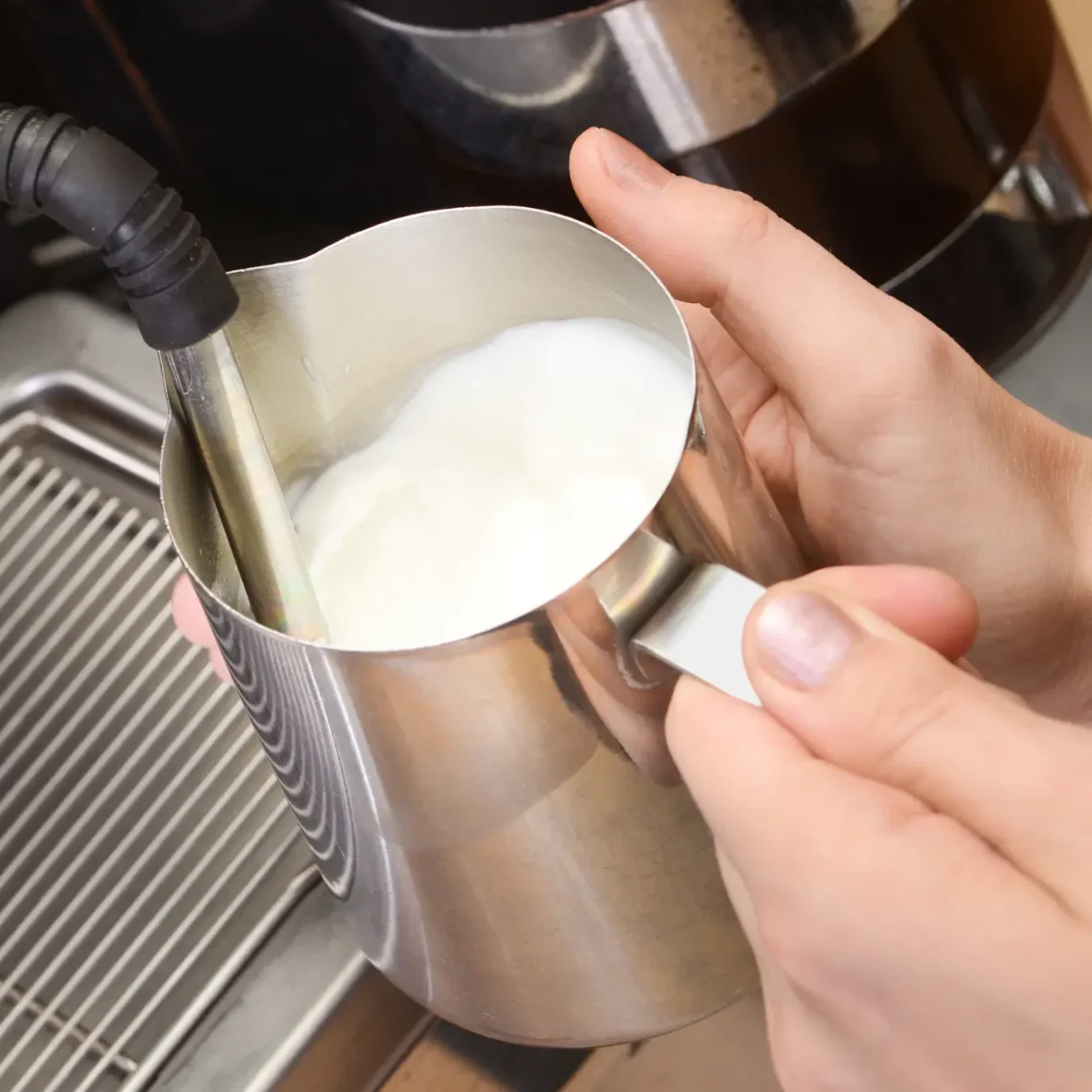
Frothing and steaming milk correctly are crucial for achieving the creamy texture of café cappuccinos and café lattes:
- Milk Temperature: Heat the milk to around 150°F (65°C) for the ideal consistency and sweetness.
- Frothing Technique: Use a steam wand or frother to create microfoam milk. The goal is to achieve velvety, microbubbles that can be poured over the espresso.
- Practice: Frothing and steaming require practice. Experiment with different milk types and frothing techniques to find your preferred texture.
Mastering frothing and steaming is vital for a smooth and velvety coffee texture.
Creating Coffee Artistry
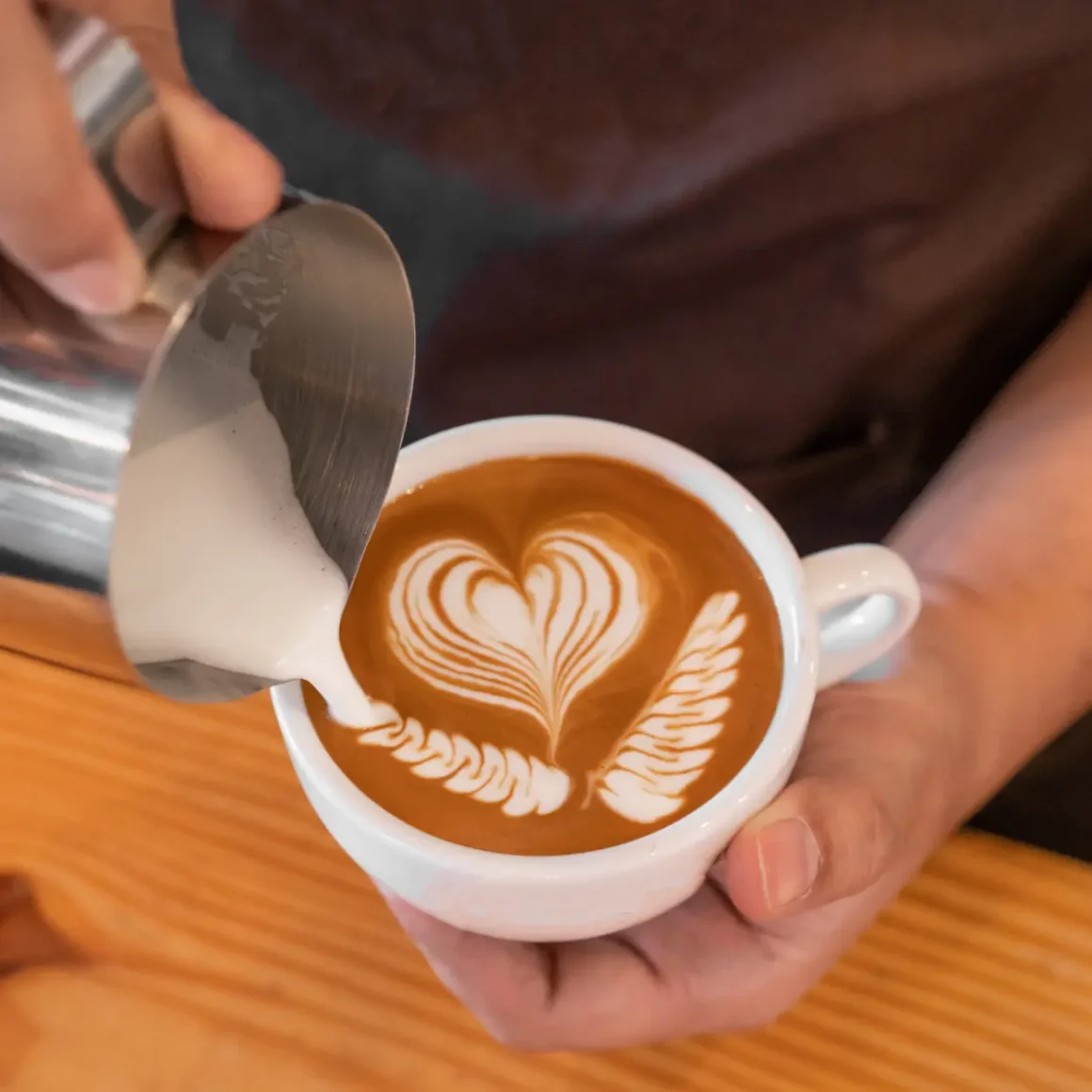
To take your homebrewed café cappuccino or café latte to the next level, consider exploring coffee artistry:
- Latte Art: Learn the art of pouring intricate designs on the coffee’s surface using steamed milk. This adds a visual element to your coffee.
- Flavor Syrups: Experiment with flavored syrups like caramel, vanilla, or chocolate to create unique and personalized coffee creations.
- Whipped Cream and Toppings: Add whipped cream, chocolate shavings, or cinnamon to enhance the flavor and presentation of your homemade cappuccinos and lattes.
Overall, brewing café-style cappuccinos and lattes at home is an enjoyable endeavor that requires the right equipment, technique, and creativity. Whether you choose an espresso machine, manual methods, or coffee pod machines, mastering the art of frothing and steaming, and experimenting with coffee artistry, can elevate your coffee experience to rival that of your favorite café.
Cappuccino vs Latte: Brewing Technique
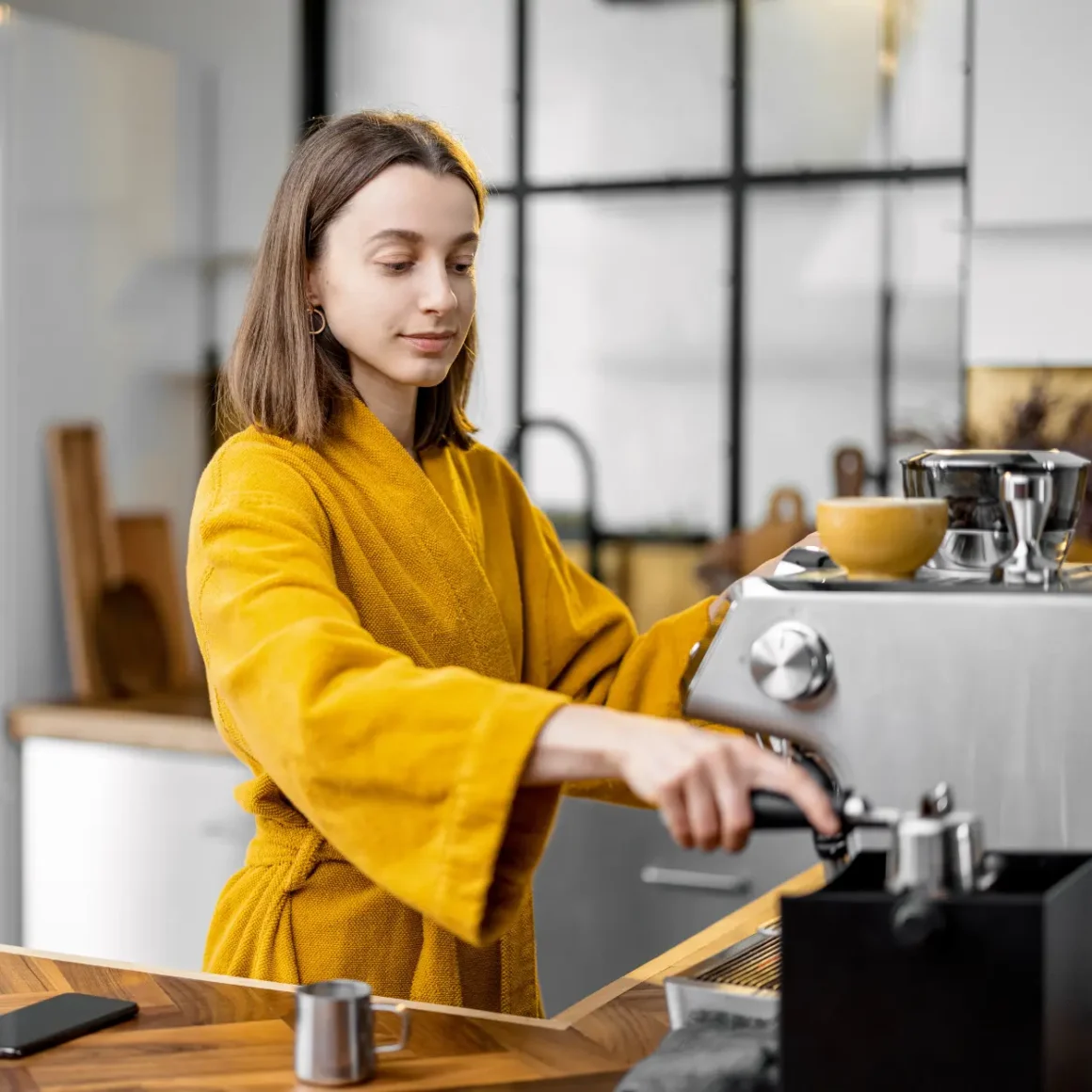
Diving into the world of coffee often leads many to the famous debate of cappuccino vs latte. While both drinks utilize the strong foundation of espresso, their distinction lies in the technique of milk preparation and presentation. As we journey further, we’ll explore the methods to brew these classic beverages and the equipment that can enhance the experience.
How to Make a Cappuccino
At its core, a cappuccino marries the boldness of espresso with the silkiness of steamed milk. Perfecting this drink requires an understanding of both these elements.
- Brewing the Espresso: Begin by grinding your coffee beans to a fine consistency. Place the grounds in the portafilter basket, ensuring it’s firmly tamped. Then, extract your espresso shot, keeping an eye on the richness and color.
- Steaming the Milk: Take around 5 ounces of milk and steam it. The objective is to get a velvety texture, with the milk expanding to create the right amount of foam. The final temperature should be approximately 150°F (65°C) to retain the milk’s sweetness.
- Combining the Two: After the milk is steamed, pour it over the espresso. The final product should reflect a 1:1 ratio of milk to espresso. For a touch of tradition, a sprinkle of cinnamon or cocoa can be added.
The beauty of a cappuccino lies in its balance; achieving it at home can be both an art and a delight.
How to Make a Latte
The café latte, commonly referred to simply as latte, is a beverage that places emphasis on steamed milk, with just a whisper of espresso peeking through. With a base of espresso and dominated by steamed milk, the latte offers a creamier texture compared to the cappuccino.
- Preparing the Espresso: Just as with the cappuccino, start by extracting a robust shot of espresso from finely ground coffee beans.
- Milk’s Role: The technique of steaming milk for a latte focuses less on foam and more on achieving a creamy consistency. The steam wand’s aerating process is shorter to ensure minimal foam.
- Assembling the Drink: Gently pour the steamed milk over the espresso. The creaminess of the milk should take center stage, with the espresso forming a rich undercurrent.
Crafting a latte requires an appreciation for the subtleties of milk and its interplay with espresso.
Elevating Your Home Coffee Game
Brewing coffee at home isn’t just about the final product, but the journey of learning, experimenting, and perfecting.
- Experiment with Beans: Different coffee beans have varied flavor profiles; explore to find your favorite.
- Invest in Equipment: Over time, consider upgrading your equipment for enhanced results.
- Education: Attend workshops, read books, or watch tutorials to continue learning.
With dedication and passion, you can turn your home into the best coffee shop in town.
Coffee Culture and Trends
Coffee has always been more than just a beverage; it’s a communal ritual, a conversation starter, and a source of comfort and warmth. Today, coffee culture and its trends are constantly evolving, reflecting societal shifts and culinary innovation. Let’s embark on a journey to discover how the world enjoys its cappuccino coffee and café latte, and what the future holds for this beloved brew.
Cappuccino and Latte Around the World
Every corner of our planet has its unique way of celebrating the age-old tradition of coffee drinking. Cappuccino and latte, two of the most recognized coffee beverages, have traveled globally, each region adding its distinct flair and interpretation.
Regional Variations

Coffee drinks like cappuccino and latte may originate from Italy, but today, they have numerous regional adaptations:
- Dry Cappuccino: A version with less steamed milk and more foam, intensifying the coffee flavor.
- Freddo Cappuccino: A cold version of the classic drink, popular in Greece, topped with cold-frothed milk.
- Latte Macchiato: Literally “stained milk” in Italian, this drink features steamed milk marked with a shot of espresso.
- Pumpkin Spice Latte: North America’s autumn favorite, this latte is infused with flavors of pumpkin, cinnamon, and nutmeg.
- Chai Latte: A fusion of East and West, this drink combines steamed milk with spiced tea, popular in many Western coffee shops.
Every region adds its narrative to these coffee classics, making them a reflection of local tastes and preferences.
Coffee Culture Influences

Several factors shape the coffee cultures of different regions:
- Historical Traditions: For instance, Italy’s espresso bars or Turkey’s rich, unfiltered coffee rituals.
- Colonial Impacts: Many coffee-growing countries were introduced to the bean by colonizers, shaping their contemporary coffee culture.
- Economic Factors: The presence of coffee farms or industries can influence local preparation methods and consumption patterns.
- Globalization: As people travel and migrate, they bring their coffee preferences with them, influencing and being influenced by their new surroundings.
Thus, coffee culture is a blend of tradition and transformation, evolving with time and tide.
Exploring Global Coffee Trends

The world of coffee is vast, and trends emerge as quickly as they fade. Some of the notable global trends include:
- Iced Cappuccino: A refreshing twist to the classic, especially popular in warmer climates.
- Caramel Cappuccino & Mocha Cappuccino: Sweet variations offering a delightful blend of flavors.
- Specialty Brews: With more informed consumers, there’s a rise in demand for single-origin coffees and unique brewing methods.
- Health and Coffee: With the rise in health consciousness, many are looking for organic coffee, decaf, or alternative milk options.
Staying attuned to these trends ensures coffee enthusiasts always have something new to look forward to.
Coffee-Related Innovations
The ever-growing love for coffee has fueled countless innovations, making it easier, tastier, and more sustainable for aficionados to enjoy their favorite brew.
Nitro Coffee and Cold Brew
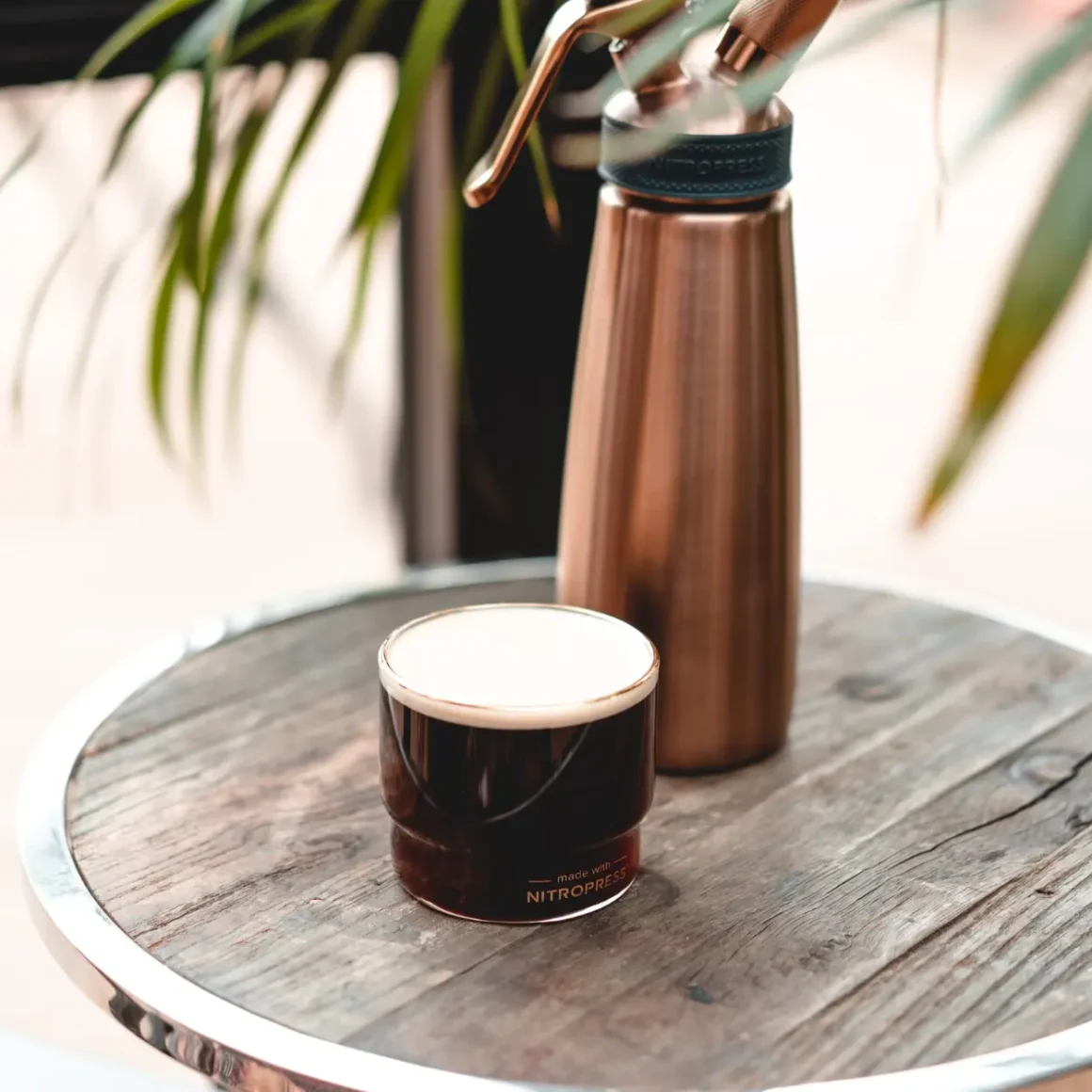
Innovations in the coffee world are always brewing. Two of the latest trends are:
- Nitro Coffee: Cold brew coffee infused with nitrogen, giving it a creamy texture and a frothy head. (4)
- Cold Brew: Coarse coffee grounds steeped in cold water for an extended period, offering a smoother and less acidic drink.
These innovations cater to the modern palate, seeking diverse flavors and experiences.
Coffee Cocktails and Infusions
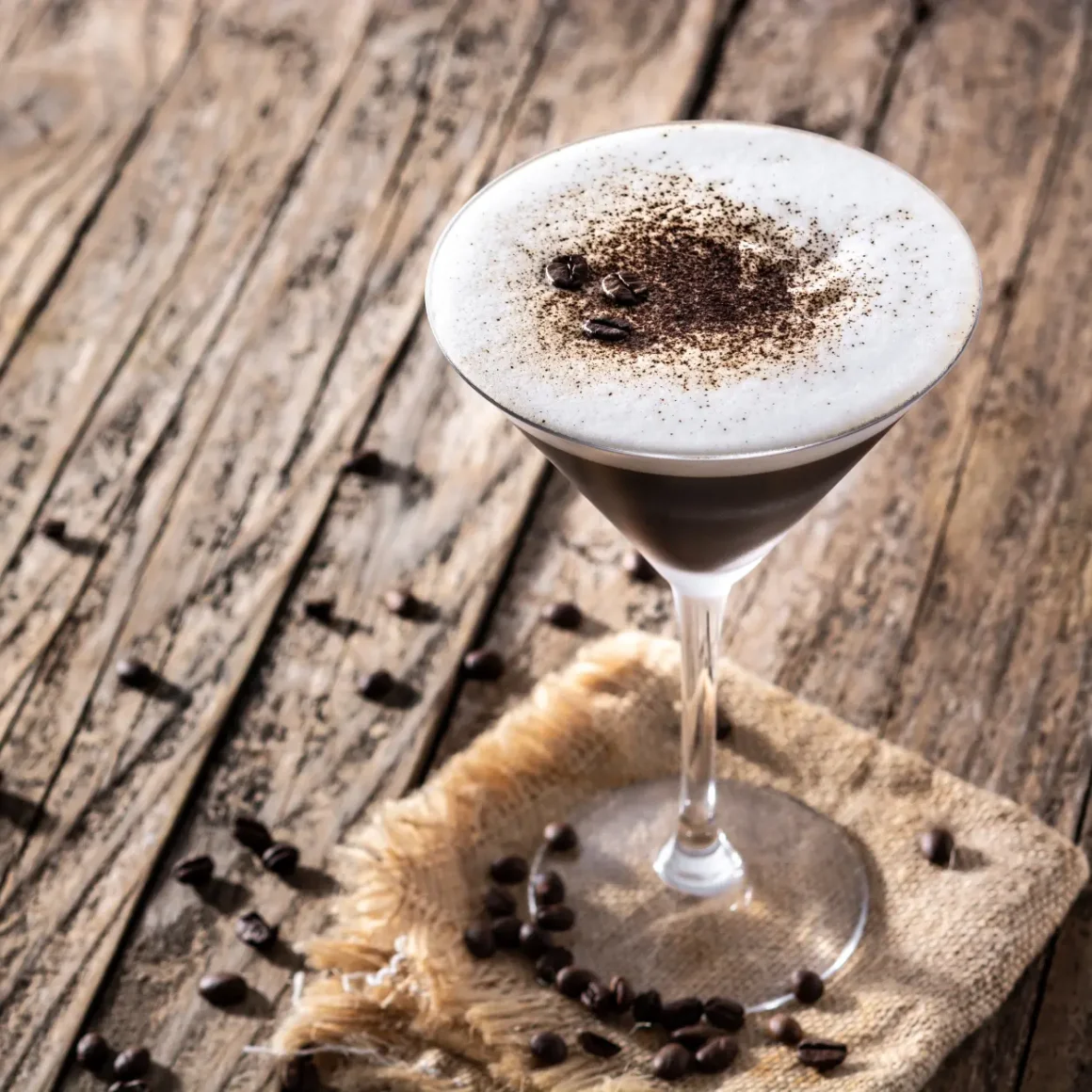
Coffee has found its way into mixology, resulting in:
- Espresso Martini: A cocktail with coffee, vodka, and coffee liqueur.
- Coffee-infused Spirits: Whiskey or rum aged with coffee beans, infusing the spirit with rich coffee flavors. And if you’re intrigued by the idea of coffee-infused spirits, be sure to check out our articles on Coffee Vodka or Coffee Rum for an in-depth look at these delightful caffeinated concoctions
These combinations celebrate the versatility of coffee, making it a drink for all hours.
Sustainability and Ethical Coffee Choices
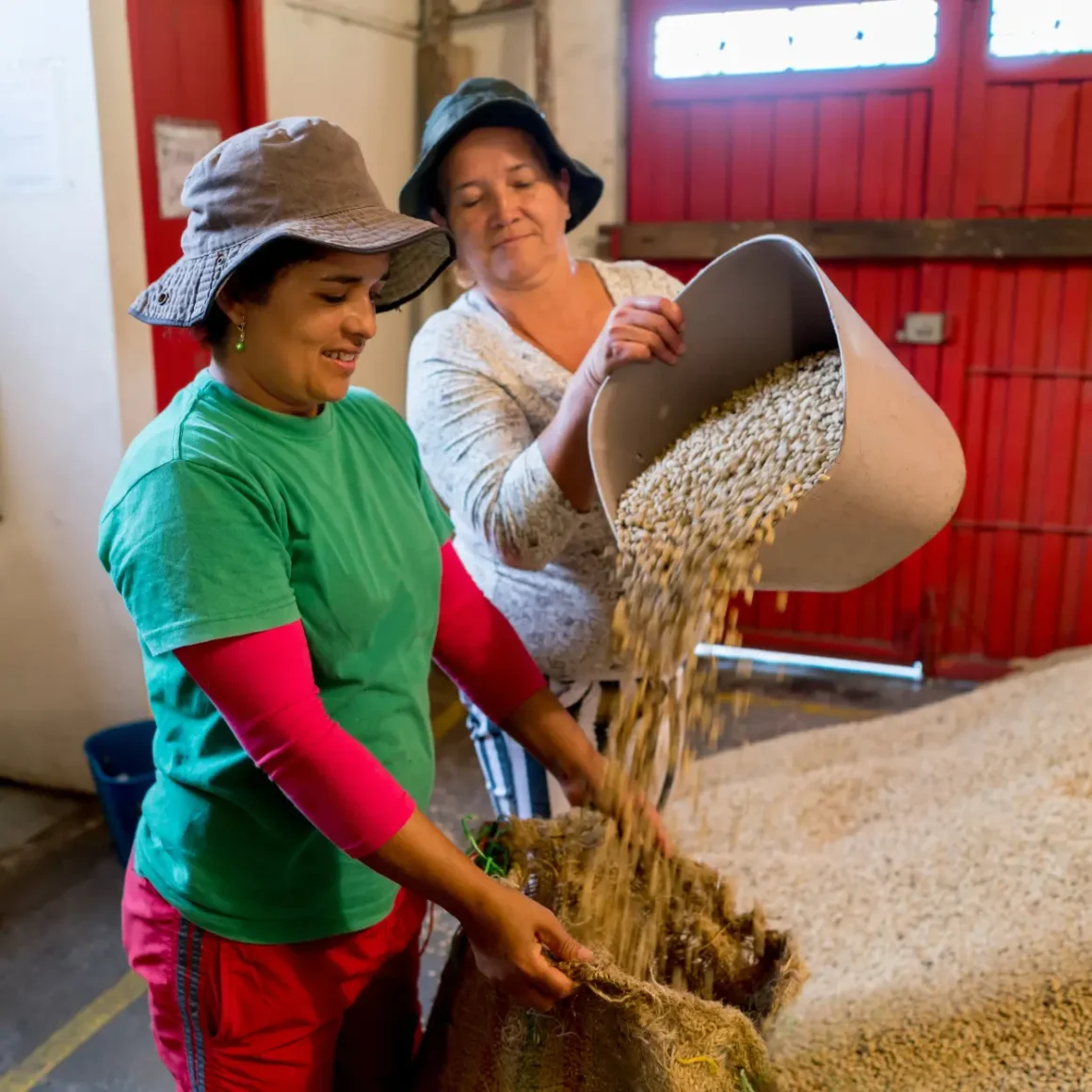
Sustainability is not just a trend but a necessity. In the realm of coffee:
- Fair Trade: Ensuring farmers receive a fair price for their beans.
- Organic Farming: Growing coffee without harmful pesticides or synthetic fertilizers.
- Shade-Grown Coffee: Cultivating coffee under the canopy of trees, promoting biodiversity.
Making ethical coffee choices ensures that every cup contributes to a better world.
The world of coffee is vast, dynamic, and ever-evolving. Dive in, explore, and savor the myriad flavors and experiences it offers.
Conclusion
As we journey through the intricate realms of coffee culture, the cappuccino vs latte debate stands testament to the rich diversity and heritage of coffee consumption worldwide. While both beverages stem from similar espresso-based roots, their distinct identities, influenced by regional variations, global trends, and even ethical considerations, showcase the depth and dynamism of the coffee world. From the frothy peaks of a dry cappuccino to the silky layers of a latte macchiato, our exploration underscores that beyond mere beverages, these classics are stories in a cup, each sip echoing centuries of tradition and innovation. In appreciating their nuances, we don’t just discern between two drinks, but immerse ourselves in the vast tapestry of global coffee culture. Whether you’re a steadfast cappuccino enthusiast or a latte lover, one thing remains clear: the journey of discovery is as enriching as the brew itself.
FAQ
What's the history behind latte art?
Latte art originated in Italy and became a symbol of craftsmanship among baristas, adding aesthetic appeal to coffee drinks
Are there any cultural preferences for cappuccino or latte?
Yes, preferences vary globally, with regions like Europe traditionally favoring cappuccinos in the morning, while lattes gain popularity in places with a strong café culture.
Can you make a cappuccino or latte without an espresso machine?
Absolutely, using methods like a French press or Moka pot can simulate the concentrated coffee required.
How do different milk types affect the taste of these drinks?
Different milk types can alter the flavor, texture, and frothing capabilities, with options like almond, soy, and oat each offering unique taste profiles.
